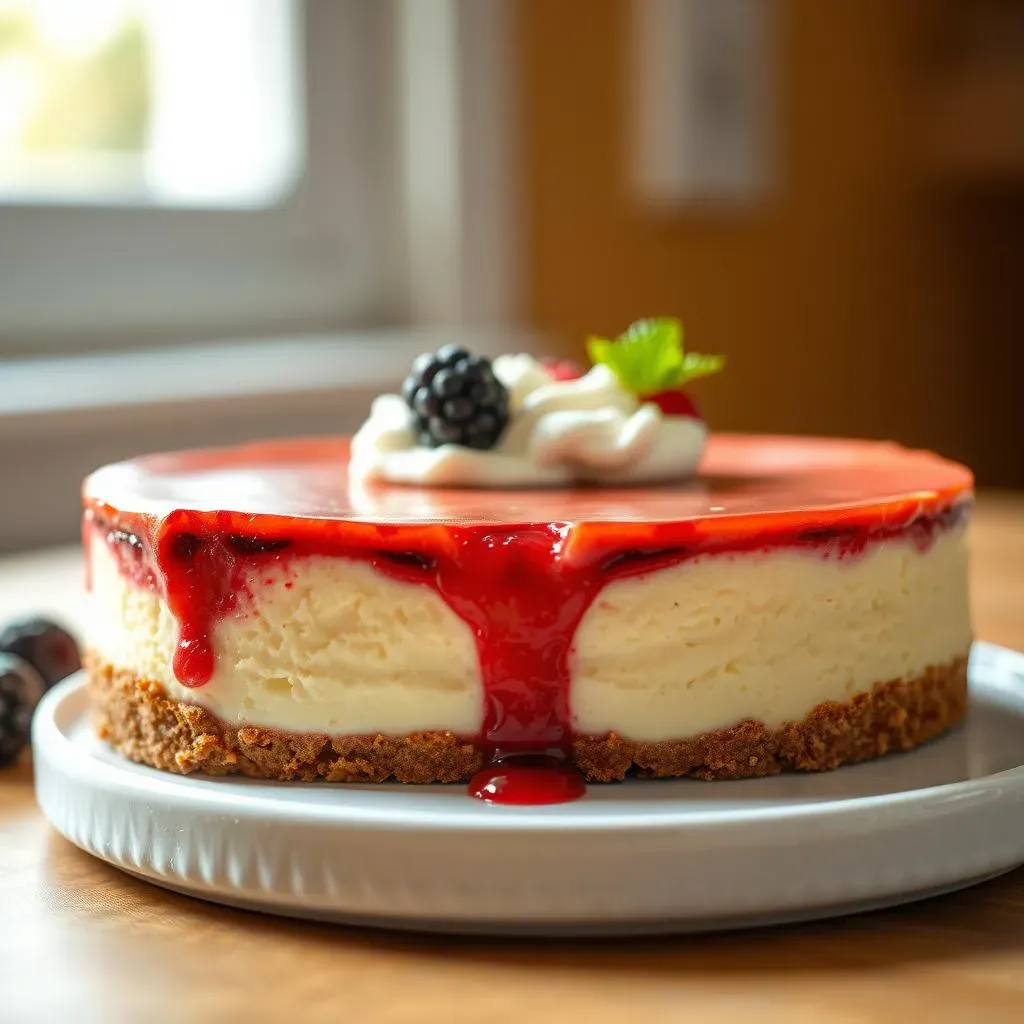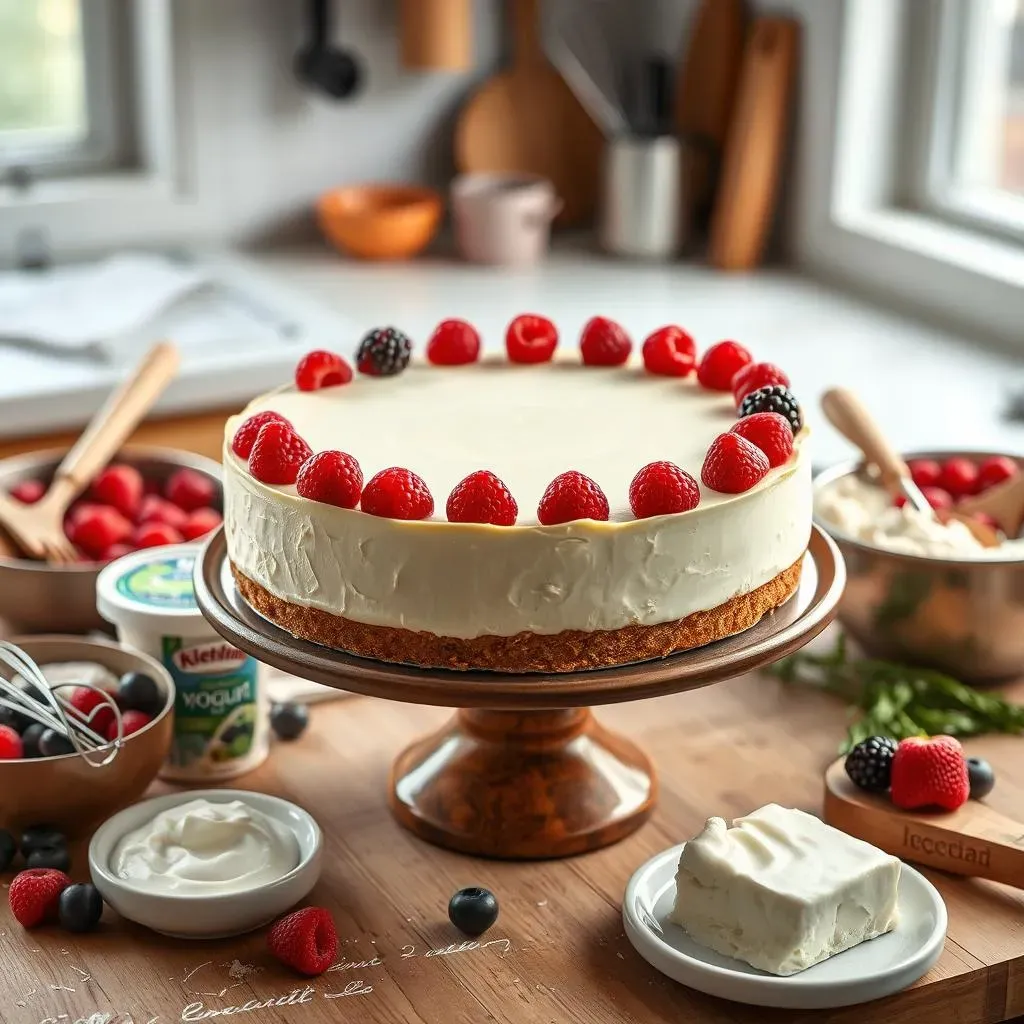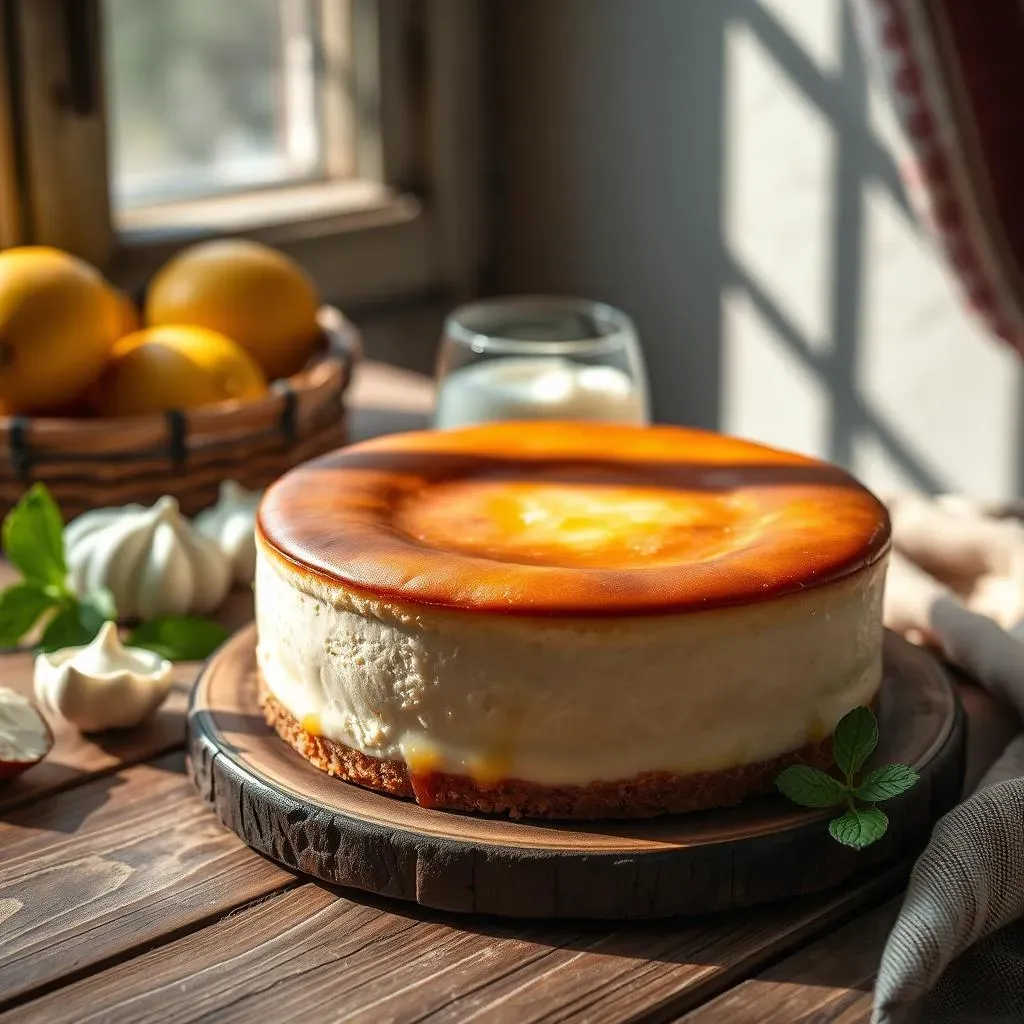Table of Contents
Ever stared at a cheesecake recipe, only to realize you're fresh out of sour cream? I know the feeling. It's like the baking gods are playing a cruel joke. But fear not, fellow dessert enthusiasts! That creamy tang that sour cream brings to a cheesecake isn't irreplaceable. In this article, we’re tackling the great "substitute for sour cream in cheesecake" dilemma head-on. We'll explore why sour cream is such a key player in cheesecake, what happens when it's MIA, and the best alternatives you can use to keep your baking dreams alive. From the tangy twist of yogurt to the creamy richness of ricotta, we'll uncover the secrets to making a delicious cheesecake, even when the fridge is playing hard to get. I'll guide you through each substitute, offering tips and tricks to ensure your cheesecake turns out perfect, every single time. So, let's ditch the baking panic and dive into the world of sour cream substitutes!
Why Your Cheesecake Needs Sour Cream (and What Happens When You Don't Have It)

Why Your Cheesecake Needs Sour Cream (and What Happens When You Don't Have It)
The Tangy Magic of Sour Cream
Okay, let's talk about why sour cream is the unsung hero of cheesecake. It's not just some random ingredient we throw in for kicks; it's actually crucial for the flavor and texture. That slight tanginess you get? That’s sour cream doing its job, balancing the richness of the cream cheese and preventing it from tasting too heavy or flat. It's like the lemon in a lemonade – you need that zing to make it interesting. It also adds moisture, which is super important to keep your cheesecake from drying out and becoming a crumbly mess. Think of sour cream as the secret agent, working behind the scenes to make your cheesecake a smooth, creamy dream.
What Happens When Sour Cream is a No-Show
So, what if you decide to skip the sour cream, or worse, you just don't have any on hand? Well, your cheesecake will suffer, I'm not gonna lie. Without that signature tang, your cheesecake might taste overly sweet and one-dimensional, which is just a fancy way of saying boring. And texture? Forget that velvety smooth consistency; you're more likely to end up with a dense, almost dry cake. It's like trying to bake a cake without eggs – it's just not going to have the same lift and structure. Trust me, I've been there and it's not pretty. The structural integrity of the cheesecake will also be compromised, leading to cracks and a less appealing overall look.
Feature | With Sour Cream | Without Sour Cream |
|---|---|---|
Flavor | Tangy, balanced | Overly sweet, one-dimensional |
Texture | Smooth, creamy | Dense, potentially dry |
Moisture | Moist and tender | Potentially dry and crumbly |
The Balancing Act: Why It Matters
The deal with sour cream is that it's not just about its individual qualities; it's about how it interacts with the other ingredients. It's about that perfect balance of sweet, tangy, and creamy. It’s why the "substitute for sour cream in cheesecake" question is so important. It's not just about replacing a wet ingredient, it's about recreating that balance. Think of it like a band, sour cream isn't the lead singer, but it's the bass that grounds all the other instruments. Without it, the whole song (or cheesecake) falls flat. So, understanding its role is key to finding the right substitute and avoiding a baking disaster.
Top Sour Cream Substitutes for Cheesecake: Yogurt, Ricotta, and More

Top Sour Cream Substitutes for Cheesecake: Yogurt, Ricotta, and More
The Tangy Champion: Yogurt
Okay, so you’re staring at that recipe, and the sour cream container is empty. Don't sweat it! Yogurt is your best friend here. I'm talking about plain, full-fat yogurt, not the flavored kind with fruit on the bottom. That stuff is great for breakfast, but not so much for cheesecake. Greek yogurt is an even better choice because it’s thicker and has a similar tang to sour cream. It's like the reliable friend you can always count on to fill in when you need a hand. The key is to make sure it’s plain, so you don’t end up with a weird vanilla-flavored cheesecake.
I remember one time, I was making a cheesecake for a potluck, and I realized I was out of sour cream about an hour before I was supposed to leave. Panic mode set in, but then I remembered the tub of Greek yogurt in the fridge. It saved the day! My friends couldn’t even tell the difference, and I got a bunch of compliments on the cheesecake. It’s a great 1:1 substitute, meaning that if the recipe calls for 1 cup of sour cream, you use 1 cup of yogurt. Easy peasy.
The Creamy Contender: Ricotta Cheese
Next up, we have ricotta cheese, the underdog of cheesecake substitutes. You might be thinking, "Ricotta? Isn't that for lasagna?" Yes, it is, but it's also a fantastic way to add moisture and a subtle tang to your cheesecake. It has a different texture than sour cream, so you need to handle it with a bit more care. It's like a delicate flower; you can’t just throw it in and expect it to work its magic. I like to blend it before adding it to the cheesecake batter to make it smooth and creamy. This also helps to avoid any small lumps in the final product. It's a trick I learned from my grandma, who is the queen of substitutions.
When using ricotta, I've found that it's best to start with a smaller amount than what the recipe calls for in sour cream, and then add more until you get the right consistency. It's not a 1:1 swap like yogurt, so you need to use your best judgment. Think of it as a gradual process, like painting a picture. You start with the basic outline and add the details slowly. It also has a slightly sweeter flavor than sour cream, so you might need to adjust the sugar in your recipe accordingly.
Substitute | Texture | Flavor | Notes |
|---|---|---|---|
Yogurt | Smooth, creamy | Tangy | Use plain, full-fat or Greek yogurt; 1:1 substitution |
Ricotta Cheese | Slightly grainy, but smooth when blended | Mildly sweet, subtle tang | Blend before using; adjust amount to taste |
Other Substitutes and Honorable Mentions
Alright, so yogurt and ricotta are the stars of our show, but there are a few other substitutes you can use in a pinch. Mascarpone cheese, for example, is a rich and creamy option that's similar to cream cheese. It has a very mild flavor, so it won't add the same tang as sour cream, but it will definitely give your cheesecake a luxurious texture. It’s like a velvet blanket for your taste buds. Another option is crème fraîche, which has a higher fat content than sour cream, so it will make your cheesecake extra decadent. But it's not as readily available as yogurt or ricotta.
You can also use a mixture of cream cheese and a little bit of milk or lemon juice to mimic the tanginess of sour cream. It's a bit of a science experiment, but it can work if you’re really desperate. But honestly, yogurt and ricotta are the easiest and most reliable "substitute for sour cream in cheesecake" options. I’ve tried them all, and I always go back to these two. They’re like the dynamic duo of cheesecake baking, always ready to save the day.
How to Use Each Substitute: Tips and Tricks for Perfect Cheesecake

How to Use Each Substitute: Tips and Tricks for Perfect Cheesecake
Yogurt: The Easy Peasy Swap
Alright, let's get down to brass tacks on how to actually use yogurt as a "substitute for sour cream in cheesecake." The good news is, it's pretty straightforward. As I mentioned before, you can usually swap it in a 1:1 ratio. So, if your recipe calls for one cup of sour cream, use one cup of yogurt. Simple as that. However, the type of yogurt matters. I’ve found that full-fat Greek yogurt works best because it's thick and tangy, just like sour cream. If you're using regular full-fat yogurt, it might be a little runnier, so you might want to strain it through a cheesecloth for a couple of hours to get rid of some of the excess liquid. It's like giving it a little spa treatment before it goes into the cheesecake. This will help ensure your cheesecake doesn’t become too watery.
Also, make sure your yogurt is at room temperature before you add it to your batter. This will help it blend in more smoothly and prevent any lumps from forming. It’s a small step, but it makes a big difference. I like to set mine out on the counter while I gather the rest of my ingredients. It's kind of like letting the yogurt get comfortable before it joins the party. Remember, the goal is to mimic the texture and tang of sour cream, so don't be afraid to taste your batter and adjust as you go.
Ricotta: The Blending Secret
Now, ricotta is a bit more finicky, but don't let that scare you. It's worth the extra effort, I promise. The key to using ricotta as a "substitute for sour cream in cheesecake" is to blend it before you add it to the batter. I like to use a food processor or a blender, but you can also use an immersion blender if you have one. Blend it until it's smooth and creamy, like a thick sauce. This will prevent any grainy texture in your cheesecake. It’s like giving the ricotta a makeover, transforming it from a lumpy mess into a velvety dream.
Also, ricotta has a milder flavor than sour cream, so you might need to add a touch more lemon juice or a pinch of salt to your batter to replicate that tangy taste. It's all about balance, like a well-tuned instrument. Don't go overboard with the lemon juice, though, or you'll end up with a lemon cheesecake. Start with a small amount and taste as you go. When you're adding the ricotta, do it in small additions, mixing thoroughly in between. This will help it incorporate smoothly and avoid any lumps.
Substitute | Key Tips |
|---|---|
Yogurt | Use full-fat or Greek yogurt, strain if too runny, ensure room temperature |
Ricotta Cheese | Blend until smooth, adjust tang with lemon juice, add in small increments |
Baking and Tasting: The Final Touches
No matter which substitute you choose, the baking process remains pretty much the same. Make sure you bake your cheesecake in a water bath to prevent cracking. It’s like giving your cheesecake a gentle hug while it cooks. This helps to keep the moisture in and prevents it from drying out. Also, don’t overbake your cheesecake, it should still have a slight wobble in the center when you take it out of the oven. It’s like a perfectly cooked steak, you want it just right, not overdone.
And finally, the most important tip of all: taste as you go. Baking is a science, but it's also an art. Don't be afraid to adjust the recipe to your liking. If you find that your cheesecake is too sweet, add a touch of lemon juice or salt. If it's not tangy enough, you can add a little bit more yogurt or ricotta. It’s like being a chef, you’re the one in charge, so trust your instincts. I like to make a small test batch before making the full recipe, just to make sure the flavors are spot on. It’s a bit like doing a dress rehearsal before the big show. And remember, even if your cheesecake isn’t perfect the first time, don’t give up. Baking is a journey, not a destination.